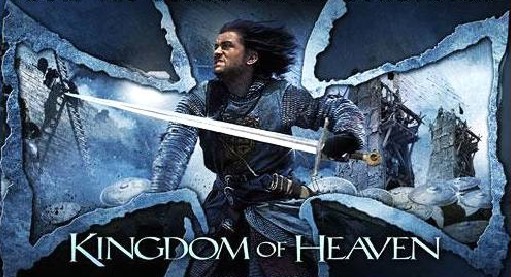Medieval Jousting With A Soundtrack From The 70's
Examples of Anachronism's used in A Knight's Tale
The crowd chanting the song, "We Will Rock You" by queen, at a few jousting events.
Face paint, colorful hair dye, and odd hairstyles worn by characters, especially Joselyn.
The question is than, was A Knight's Tale produced for entertainment or for historical accuracy?
The answer would be, 60/40, or somewhere in that area. There are many aspects of the film that are historically correct, but the film is occupied more with Hollywood additives and storylines in order to increase entertainment.
A Knight's Tale tells the story of William Thatcher, who was sold to a man of nobility by his father at a young age, so that William could have a better chance at "changing his stars." William worked for Sir Ector for many years, until he was killed in a jousting tournament. William, and two other men who worked for Sir Ector, Roland and Wat, relied on the money that Sir Ector won at his tournaments to feed themselves or visit home. William comes up with the idea to pretend to be Sir Ector and participate in the last jousting match.
After winning said match, William wants to continue jousting, but only nobility are allowed to take part. While on the road the three men meet a writer who says he can fake nobility papers if they feed him and clothe him. With nobility papers now in hand, and the new name, Sir Ulrich Von Liechtenstein for William, the four men begin their brigade of jousting tournaments.
There were many historically factual aspects when it came to the tournaments that William took part in. When participants first arrived they had their nobility papers checked, and then chose from a variety of categories in which they wished to partake. The categories included: axe fight, sword fight, club fight, jousting, and long spear. William chooses jousting and sword fight, and in both cases, the armor he wears is very different from that of the armor of a military man. The armor William wears is much thicker, heavier, and covers more area than the armor that military man wear. That is because it is harder to move around in the thicker armor and the weight of it would slow soldiers down.

Of course, needed in any good modern reminition of a knightly tale, romance is needed. Which actually isn't far off entirely, because in many of the writings from the late 11th and 12th century, romance is included. In the film, William falls for a girl named Joselyn. The intensity and publicity of the romance itself though was indeed amplified to increase entertainment and add to the storyline. The clothing and hairstyles of Joselyne were also one of the biggest anachronism's in the whole film. She often wore medieval style clothing with a modern day twist, and many times her hair was dyed colorfully and in and odd array.
Eventually it is found out that William lied about his nobility, and he is arrested. William is put in the stocks before the publice to be ridiculed. It is important to note, that earlier in the movie, William faced an opponent who turned out to be Prince Edward. Usually when participants find out they are about to joust Prince Edward, they automatically forfeit out of respect and fear. William however still jousted, even with knowing he was facing Prince Edward. He allowed Prince Edward to be able to do what he continuously failed to be able to, joust.
It is now, when William is in the stock, that Prince Edward comes to return the favor. Prince Edward frees William and before all the witnesses, makes him a knight, contesting that "This is my word, and as such, is beyond contestation." Which during the Medieval Ages, a Prince would have such power, and because most of the citizens present in the scene were commoners, there was a hundred percent guarantee that his word would not be contested.
So is A Knights Tale historically accurate? In some aspects the answer is yes. But with the additives of modern day songs, the overplay of the romance between Joselyn and William, and a crafted storyline focused more towards entertainment, the historical representation gets slightly lost.
If the question being asked was, is the movie worth watching, than the answer is undoubtedly yes. From an entertainment point of view, the movie constructs a unique twist between the medieval ages and modern day. This creates an interesting storyline filled with romance, action, comedy, friendship and chivalry.
"A Knight's Tale: Hoxtonista hairdos, Freddie Mercury and the Mexican Wave." The Guardian.
https://www.theguardian.com/film/2009/feb/05/heath-ledger-a-knights-tale
"A Knights Tale." The Guardian. https://www.theguardian.com/film/2001/sep/02/philipfrench
Paul B. Newman. "Daily Life in the Middle Ages." McFarland & Company, Inc., Publishers. North Carolina. 2001.
"Tournament: Medieval Military Games." The Editors of Encyclopedia Britannica. Encyclopedia Britannica. https://www.britannica.com/sports/tournament-medieval-military-games






